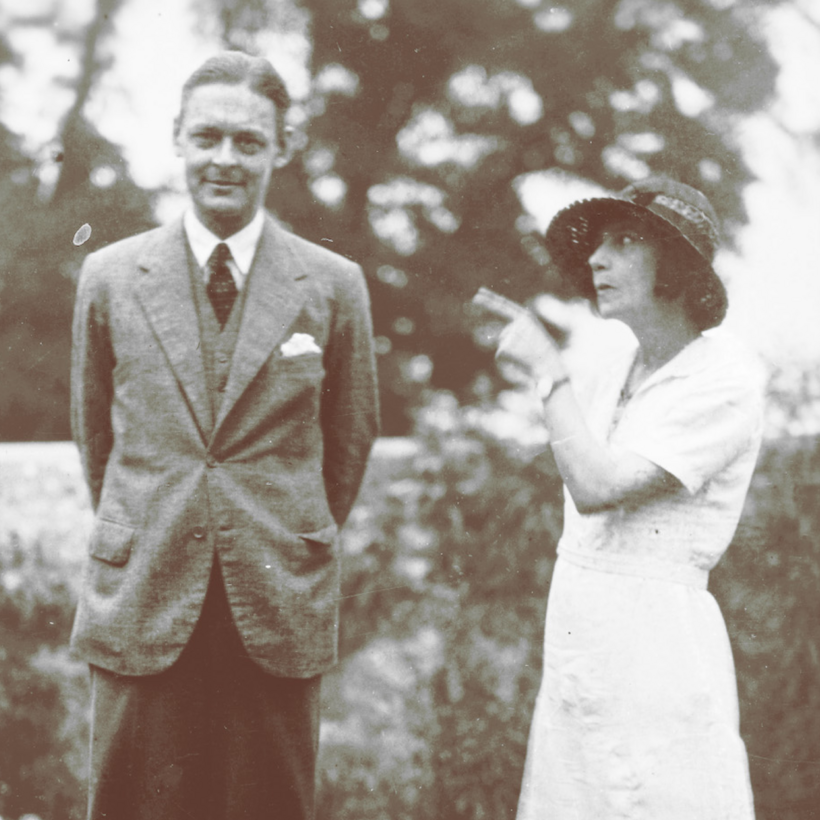To many readers TS Eliot seems an austere and remote figure, hidden behind unintelligible poetry and intimidatingly erudite prose. So it is a pleasant surprise to find that in this whopping second (and final) volume of Robert Crawford’s biography, although due attention is paid to Eliot’s writing (and to his rampant racism and anti-Semitism), Eliot’s love life, or lack of it, is a big concern.
However, Vivien proved disgusting to him physically, and her constant, erratic demands drove him to distraction. Their tortured marriage was, he conceded, one of the reasons for the generally rather glum view of life taken in The Waste Land. It may be, too, that it was to get away from Vivien in the daytime that he stuck to his full-time job in Lloyds Bank, from which well-meaning friends wished to “free” him.
It seems to have struck him, not long after his marriage in 1915, that the real love of his life was Emily Hale. They had met back in the US when he was 17 and she 14, and he had declared his love for her before leaving for England. She became a teacher of drama and elocution and, until the Second World War intervened, spent summers with family members in Chipping Campden, seeing him often.
Whenever he went to the US, usually on lecturing assignments, they met too. They had to be careful, for Eliot was, after all, a married man. But they both treasured memories of a single kiss they had exchanged when he was on a lecturing trip in California. It had taught him, he wrote, “what a kiss is”. He had felt “suspended between heaven and earth”.
Returning to England, he did not have to go back to the Lloyds Bank job. In 1924 Geoffrey Faber had invited him to dinner in All Souls College, Oxford, and suggested he join the newly founded firm of Faber and Gwyer (later Faber and Faber). Eliot had eagerly concurred. That was not the only big change. He had decided before the California trip, on which Vivien did not accompany him, that he could no longer bear to live with her. Instead, he moved in to share a flat with his friend John Hayward, who suffered from progressive muscular dystrophy and needed Eliot’s help. Meanwhile, Eliot wrote to Emily several times a week, expressing his “adoration”, requesting a lock of her hair and vowing that he wished “to have you with me day and night, always”.
Here, though, there was a difficulty. In 1927, finding life with Vivien “disgusting”, he decided that only Christianity could reconcile him to it, and he was received into the Church of England at a ceremony of adult baptism. Once Emily realized how miserable he was with Vivien, she was eager that he should divorce and marry her. But Eliot maintained that canon law forbade divorce and he refused to budge on the point.
In 1927, finding life with Vivien “disgusting”, he decided that only Christianity could reconcile him to it.
An uneasy period followed, during which Vivien pursued him, knocking on the front door of the Faber building in Russell Square while secretaries hustled him out at the back. Soon she was declared insane and shut away in a private asylum where Eliot never visited her. Then came the Second World War, in which Eliot found a role as an ARP warden, fire-watching on the roof of the Faber building, as recorded in Little Gidding. He wrote passionately to Emily, sometimes several times a week. She was his “nightingale”, his “Raspberrymouth”, and he kissed her “dear, dear feet”.
The war ended, and Eliot went to America again. He had already decided that even if Vivien died, he could not marry Emily. It was hard to explain why, but he tried. They were both so much older than they had been when they fell in love. “I meet myself face to face as a stranger whom I have got to live with.” Vivien did die, perhaps of an overdose, in January 1947, and when Eliot told Emily he could not marry her she was distraught.
At this point a new actor comes onstage: Eliot’s secretary Valerie Fletcher. When she was at school she heard a reading of Eliot’s Journey of the Magi. Valerie asked who had written it and, when told, the 14-year-old said: “I shall marry that man.” Eliot interviewed several applicants for the secretary job but seems to have decided on Valerie straight away. The other secretaries at Faber noticed that she always put on high heels before taking dictation from Eliot. They were married on January 10, 1957. Eliot was 68, Valerie 30. At first he continued to work, writing a new play, The Elder Statesman, and signing up Ted Hughes for the Faber poetry list. But he did not need to work. They holidayed in Italy and toured the States again, taking in Texas. In Barbados in 1962 and 1963, he swam with Valerie daily. All seemed well, but he gradually lost strength, and Valerie was with him when he died on January 4, 1965.
He was happier with her than he had ever been. But when he writes about their love, either in verse or prose, it is embarrassing, and you wish he would not do it. Yet Valerie kept and treasured every word. Perhaps Eliot demonstrates what Jonathan Bate notes in Radical Wordsworth. Being starved of sex brings out a poet’s greatest work. Sexual satisfaction is calamitous.

John Carey is a U.K.-based critic and professor of literature. He is the author of numerous books, including A Little History of Poetry, The Unexpected Professor, and What Good Are the Arts?

